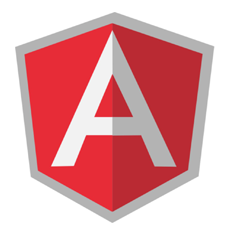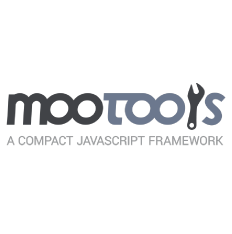Compare Products

|

|
Features Lets you write client-side web applications as if you had a smarter browser. It lets you use good old HTML (or HAML, Jade and friends!) as your template language and lets you extend HTML’s syntax to express your application’s components clearly and succinctly.
Automatically synchronizes data from your UI (view) with your JavaScript objects (model) through 2-way data binding. To help you structure your application better and make it easy to test, AngularJS teaches the browser how to do dependency injection and inversion of control.
Helps with server-side communication, taming async callbacks with promises and deferreds.
Makes client-side navigation and deeplinking with hashbang urls or HTML5 pushState a piece of cake.
Client-side MVC modular style. Models are simple objects in your JavaScript controller functions which are manipulated on the views using scopes.
Two way binding + custom watchers for variable change
Extension to HTML, i.e. Directives in the shape of custom HTML tags or attributes.
Dependency Injection to order Services etc on the go in your code files
Best SPA (Single Page Application) modal with services like $routeProvider and $location.
Different built in services like $http, $resource, $view etc
Filters, built-in e.g. for currency, orderby and user defined.
|
Features * MooTools Allows you to write powerful and flexible code with its elegant, well documented, and coherent APIs.
* MooTools code is extensively documented and easy to read, enabling you to extend the functionality to match your requirements.
* MooTools libraries are released under the Open Source MIT license which gives you the possibility to use them and modify them in every circumstance.
|
LanguagesJava Script |
LanguagesC Java Script |
Source TypeOpen
|
Source TypeOpen
|
License TypeMIT |
License TypeMIT Apache |
OS Type |
OS Type |
Pricing
|
Pricing
|
Product Comparison
JavaScript
Javascript frameworks and libraries
AngularJS is an Open Source JavaScript framework that is mainly used for building Single Page Applications (SPA). It provides a framework for client side model-view-controller (MVC) and model-view-view model(MVVM). It also consists of integrated tools that help you build well structured client side applications with less code that are testable and easily maintained. AngularJS lets you extend HTML vocabulary for your application. It is fully extensible and works well with other libraries. Every feature can be modified or replaced to suit your unique development workflow.
MooTools is a lightweight, object-oriented JavaScript framework designed for the intermediate to advanced JavaScript developer. It allows developers to write powerful and flexible code with its elegant, well documented, and coherent APIs. MooTools is an extensible and modular framework that provides developers an option to choose their own customized combination of components. It follows object-oriented practices that make it a good choice for developers to learn and use. It also creates an easy interaction with JavaScript in web development and can also do a lot of things such as CSS extensions which gives you the ability to create animations and effects.
Here are some basic comparisons of the technologies.
Free and Open Source - Angular JS and MooTools frameworks are both FREE and open source, hence it will give you the opportunity to build powerful applications at no cost.
Browser Compatibility
AngularJS is compatible with both desktop and mobile browsers. This includes most modern browsers such as Chrome, Mozilla, the latest versions of Internet Explorer, Safari, Opera. AngularJS do not support Internet Explorer 6 or 7 and recently dropped support for Internet Explorer 8.
MooTools is compatible and tested with browsers Opera 9+, Internet Explorer 6+, Chrome 4+, Mozilla Firefox 2+, Safari 3+.
Common Benefits and Features
- uses MVC architectural pattern. The AngularJS MVC architectural pattern is a bit different than some other technologies that implement the MVC architectural pattern; the view is defined in HTML while the controller and model are implemented in JavaScript.
- implementation of SPA (Single-Page Applications) technique. This kind of approach makes applications faster as most resources (CSS, HTML, Scripts) are only loaded once throughout the application’s life and only data is transmitted back and forth. It is also effective in using local storage and caching.
- uses directives as an extension to HTML. New attributes can be used for creating HTML tags and decorating elements that manipulate DOM attributes while offering functionality to your application.
- uses plain HTML template where HTML is extended to contain information on how the model should be projected on view.
- implements dependency injection technology that allows asking for dependencies rather than looking for them.
- Allows developers to execute various enhancements to the DOM.
- allows developers to create their own customized combination of components.
- follows object-oriented paradigm.
- provides components for animation effects with optimized transitions.
- provides a number of components that provide a collection of utility functions, collection of add-ons that extend the core and provide enhanced functionality, a collection of JavaScript Native Object enhancements, a large number of enhancements, and compatibility standardization to the HTML Element object.
- provides a cross-browser interface to client-specific information like window dimensions.
- Also includes XHR interface, Cookie, JSON, and HTML retrieval-specific tools for developers to access useful data.
- allows you to rename or alias an existing method e.g. Array.alias('forEach', 'each');
* based on the above sample, we can call each instead of foreach for more readable code.
- allows you to easily implement your own pseudo selectors
- extend existing classes. Of course, since MooTools implements Object-Oriented practices, we can extend existing classes depending on how your functions were implemented.
- provides an option to create custom events
Element.Events.ctrlClick = { base: 'click',
condition: function(event)
{
return event.ctrl; // ctrlkey?
},
onAdd: function() {
this.setStyle('cursor','pointer');
},
onRemove: function() {
this.setStyle('cursor',this.retrieve('original-cursor'));
}
};

Design Goals
AngularJS
- to separate DOM manipulation from application logic
- to separate the client side from the server side of an application that allows development work to progress in parallel, and allows for reuse of both sides.
- to provide structure for the process of building an application
MooTools
- takes full advantage of the flexibility and power of JavaScript to implement better modularity and code reusability.
- class-based inheritance language like Java with the MooTools Class object
Expected essential skills
AngularJS – It would help if you have good understanding of or exposure to JavaScript to learn faster. A solid understanding of HTML, CSS, & AJAX also helps you to really make learning easy.
MooTools – In order for you to start MooTools, it would be beneficial to have a good understanding of how Object Oriented Programming practices work, or a basic to intermediate understanding on how web applications are done.
Documentation
Both frameworks provides great and detailed documentation on how these two frameworks works. They provide easy and downloadable files for setting up, and sample codes on how to implement built in methods or customize it which makes it very easy to work and start with. On the other hand Angular JS provides complete sample and out of the box information that really makes the framework easy to be learned for developers of all skill levels.
Popularity
There’s no questions that AngularJS is one of the most talked about technologies today and is more popular than MooTools. It is probably even considered as the most popular JavaScript framework today. Other frameworks such as React, Backbone, Ember, Jquery, Babylon and many more, are also on the list of top used and supported Javascript frameworks.
Conclusion
There’s no doubt that AngularJS has a greater advantage and now has the upper hand in terms of technology when compared to MooTools, which is older and not as up-to-date. However, it’s still possible that MooTools will create new technology trends or innovate. The above comparison is just the basic information on how these two technologies really work but if you really want to dig deeper you can access more detailed information very easily on their respective websites.
Compare Products
Select up to three two products to compare by clicking on the compare icon () of each product.
{{compareToolModel.Error}}

{{CommentsModel.TotalCount}} Comments
Your Comment